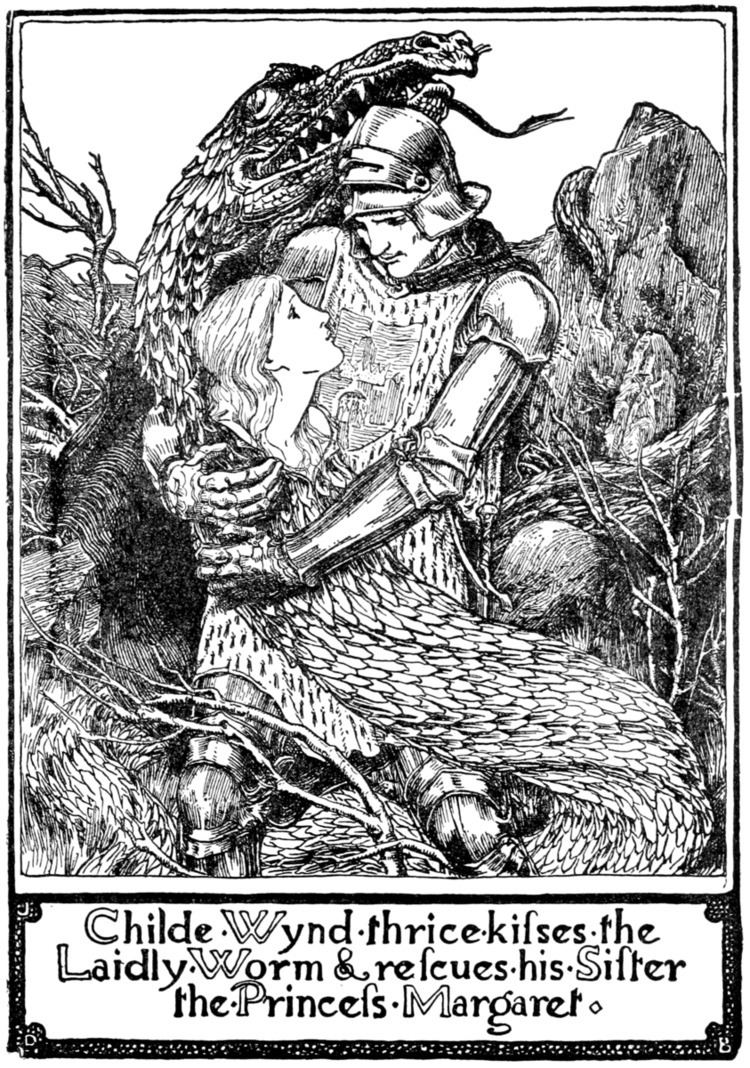 | ||
The Laidly Worm of Spindleston Heugh, also known as The Laidly Worm of Bamborough, is a Northumbrian ballad about a princess who changed into a dragon (the "laidly worm" of the title).
Contents
Synopsis
In the Kingdom of Northumbria, a kind king in Bamburgh Castle takes a beautiful but cruel witch as his queen after his wife's death. The King's son, Childe Wynd, has gone across the sea but the witch, jealous of the beauty of his daughter Princess Margaret, turns her into a dragon. The enchantment used is usually:
Later in the story, the prince returns and, instead of fighting the dragon, kisses it, restoring the princess to her natural form. He then turns the witch-queen into a toad and becomes king.
Variants
The ballad was first published in 1778 in a compilation of folk songs. The ballad was said to have been transcribed by the Reverend Robert Lambe, the Vicar of Norham, from a manuscript "made by the old mountain-bard, Duncan Frasier, living on Cheviot, A.D. 1270", although it is probable that Lambe wrote it himself, drawing on local stories. In Joseph Jacob's version, the dragon Princess Margaret becomes is appeased by putting aside seven cows for her per day. The prince her brother hears of it and comes for her, despite his stepmother's attempt to keep him away, by magic and by force of arms.
Location
Spindlestone Heugh (or Heughs) is a dolerite crag on the Great Whin Sill escarpment in the parish of Easington, Northumberland. The Spindlestone itself is a natural stone column standing out from the crag, which is also known as "Bridle Rock". According to a local legend, Child Wynd threw his horse's bridle over the rock before tackling the worm. The ballad describes a cave and a stone trough used by the worm; a feature below the crag is marked "Laidley Worm's Trough" by the Ordnance Survey, but the nearby "Laidley Worm's Cave" was destroyed by quarrying in the 19th century.
Origins
The story has a lot in common with the Icelandic Hjálmþés saga ok Ölvis.
The Laidly Worm never made it into the "Reliques" but was reprinted in various other books after its discovery. Lambe sent the fragments to his friend Bishop Percy, another antiquarian. Percy had embarked on a British Empire-spanning project to collect all the oral and written lore and ballads, which he assembled into a volume called "Reliques of Ancient English Poetry".
